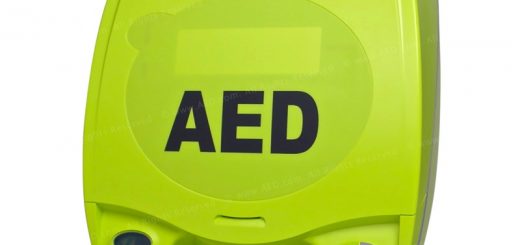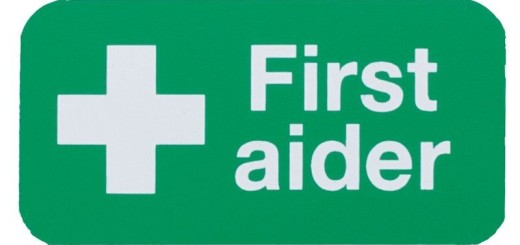What is the Difference Between Adult and Pediatric CPR?
As per the American Heart Association, about 75% to 80% of all out-of-hospital cardiac arrests that happen take place at home. Therefore, it’s clear to me that knowing how to perform CPR is crucial so you can save your loved ones when they need you the most.
CPR, or cardiopulmonary resuscitation, is an emergency lifesaving technique that is performed whenever someone’s heart stops beating or they stop breathing. Immediate CPR has the possibility of doubling or tripling the chances of a person’s survival after they experience cardiac arrest.
While knowing about the steps of CPR is important, it’s also vital to remember that the way to perform CPR on an adult differs from the way you would perform it on a child. Are you wondering what those differences are? If so, then we’re here to explore that very subject today.
In this article, we will be discussing the key differences between adult and pediatric CPR and what the different steps are with regard to performing CPR on adults and children.
Differences Between Adult and Pediatric CPR
Here are the differences between adult and pediatric CPR that you should note down:
Depth of Compression
The depth of chest compressions is one of the main differences between pediatric and adult CPR. The breastbone or the sternum in adults is more robust and deeper when compared to that of a child, requiring compressions that have a depth of anywhere between 2 and 2.4 inches.
In comparison, children have bones that are less rigid along with smaller chests, which is why the depth of chest compressions is required to be adjusted accordingly. If the child is over the age of 1, the recommended depth of chest compression is about 2 inches or 5 centimeters.
For infants and children under the age of 1, the depth is usually one-third of the diameter of their chest, which roughly translates to about 1.5 inches for infants and almost 2 inches for children attending school.
Compression Rate
The rate of chest compressions is the same for both adult CPR and pediatric CPR. It’s vital to make sure that the correct pressure level is maintained, as it should be adequate enough to keep the blood flow going while also being soft enough so that the patient does not get injured.
When timely and consistent chest compressions are provided, it helps in maintaining oxygen delivery and blood circulation to all the vital organs.
Placement of Hand
An important distinction between adult and pediatric CPR is the accurate hand placement during the procedure. When you perform CPR on an adult, remember to place both your hands on the center of the chest so that optimal compression is maintained for effective resuscitation.
Since the body structure of children is smaller, the approach adopted for CPR in terms of children is different. If CPR is being performed on a small child, it’s recommended to use just one hand and apply pressure on the chest right below the nipple line.
Further modifications need to be made where infants are concerned. Since their chests are tiny, only two fingers need to be used to deliver chest compressions.
By knowing the importance of switching your hand placement while performing CPR on adults and children, you get to improve the efficacy of the procedure accordingly. Stimulating the heart without inflicting any physical injury is the main goal of CPR, and the correct hand placement plays a crucial role in attaining this goal.
Ventilation
Ventilation is required in CPR so as to provide oxygen to the lungs of the patient. The oxygen demands are higher for a child’s body in comparison to an adult’s body. Therefore, rescue breaths become even more important when providing CPR to a child.
If the oxygen level is too low, then even the most efficient chest compressions won’t suffice to revive the heart of a child. Rescue breaths need to be given efficiently and properly.
In order to do this, slightly tilt the child’s head back, after which you should pinch their nose shut. Follow this up by covering their mouth with yours and breathing into their lungs gently until their chest rises. After every 30 compressions, pause to give the patient two rescue breaths.
Compression-to-Ventilation Ratio
When someone performs CPR alone, be it on adults or children, the compression-to-ventilation ratio to be followed is 30:2. This means that you should give 30 chest compressions followed by two rescue breaths.
When it comes to pediatric CPR, where two rescuers are involved, the compression-to-ventilation ratio one should follow is 15:2. This is so that you can maintain the efficiency of the chest compressions being given to the child.
Use of AED
When someone goes into sudden cardiac arrest, it’s vital to use an automated external defibrillator or AED to revive their heart. Much like most aspects of CPR, there is a different approach to be followed when using an AED on children and adults.
There exist special AED pads meant specifically to be used on children. These are designed in a manner such that they can deliver shocks of varying intensities.
Such AED pads are well-suited for kids below the age of eight due to the delicate structure of their bodies and because they deliver shocks of lesser intensity. If pediatric AED pads are not available, you can resort to adult AED pads, but only if there are no other options available.
Survival Rate
The survival rate among children who receive out-of-hospital CPR is anywhere between 17% to 40%. This particular statistic has improved over the years since more people now know how to perform CPR more efficiently.
The survival rate among adults who are given out-of-hospital CPR is about 10%.
FAQs
What is the difference between compressions in an adult and a child in CPR?
The depth is the point of difference between adult and pediatric CPR in terms of compression. While the compression depth of adult CPR is between 2 and 2.4 inches, the maximum depth for pediatric CPR is two inches.
Does child CPR have 15 or 30 compressions?
A child should be given 30 chest compressions while performing pediatric CPR on them.
What are the 3 Ps of CPR?
The 3 Ps of CPR are preserving life, preventing further injury, and promoting recovery.
What is the ABC of CPR?
The ABCs of CPR are airway, breathing, and circulation.
What does BLS stand for?
BLS stands for basic life support.
Conclusion
Whenever there is a cardiac emergency, at times, the only step that’s needed to save someone is for a person to come forward and perform CPR. This one step alone can often be the difference between life and death when it comes to unresponsive victims.
While knowing about the steps of CPR is supremely important, one should also remember that CPR doesn’t have a one-size-fits-all rule for both children and adults.
If you’re learning about how to perform CPR, note down the differences between adult and pediatric CPR, as mentioned in this article, so that you know just how to deal with the different situations.





